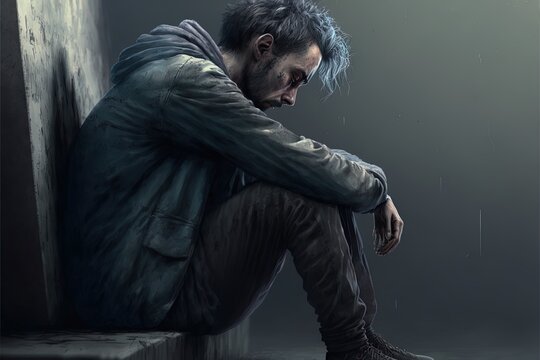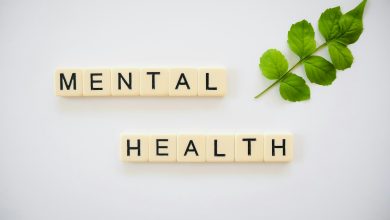The Dairy of a Depressed Drug Addict

“In the throes of my addiction, I found myself trapped in a relentless and unforgiving cycle. Each day began with a harsh awakening, the stark reality of withdrawal symptoms gnawing at my very core. It was a bleak choice that greeted me every morning: either succumb to the cravings and get high or engage in desperate schemes to obtain the money needed to fuel my addiction.
If fortune favored me and I managed to score drugs, I would sink back into the depths of intoxication, my hours drifting away in a haze of chemical escape. Time became an expendable currency, squandered without remorse.
But on the days when I found myself in the clutches of withdrawal, my desperation knew no bounds. I would frantically reach out to my girlfriend or my mother, imploring them for money, their voices wavering on the other end of the line. In the best-case scenario, someone would have the means to help me, or I’d broker a drug deal as a middleman. However, in the darkest moments, I would endure the excruciating suffering of withdrawal, a cruel punishment for my addiction.
In moments of sheer desperation, I spiraled further into the abyss. I would muster the last remnants of my humanity and embark on deplorable actions, breaking into the homes of unsuspecting families. It was a desperate bid to steal anything of value, from jewelry to change jars, from cherished photo albums to precious laptops. Anything I could lay my hands on that would fetch a decent price was fair game. The guilt and shame were momentarily eclipsed by the insatiable hunger for my next fix.
A significant portion of my life was consumed by treacherous 100-mile round trips to open-air drug markets. These journeys were perilous, driven by the relentless pursuit of substances that held me captive. The remaining hours were dedicated to the acquisition and sale of drugs at exorbitant prices, a desperate gambit to accumulate the funds required for my next purchase. It was a losing game, each batch smaller than the last as I struggled to recoup the mounting financial losses.
Occasionally, the relentless cycle was disrupted by the harsh realities of life. Arrests, overdoses, or changes in drug suppliers would momentarily shift the narrative. But the gravity of my addiction remained unbroken.
Then came a moment of reckoning. The inevitable happened, and I found myself behind bars, a stark departure from the chaotic life I had led. It was a temporary respite from the downward spiral, a period of reflection and a chance at a different future.
Today, my story takes a different turn. I make a weekly pilgrimage to a Suboxone clinic located 40 miles away, a poignant reminder of my journey from the depths of addiction to the path of recovery. My quest for sobriety is not without its challenges. I resort to using someone else’s clean urine to pass my screenings, a reminder of the lengths to which addiction can drive a person.
Recovery is a daily battle, and motivation remains elusive. At 25 years old, my past choices have left me with a felony record and minimal job experience. Isolation has become my companion, as I have pushed away the majority of the people I once knew. The relentless dreams of getting high persist, and life feels like a mere shadow of existence.
I acknowledge the dire consequences of my actions, understanding that this course will ultimately lead to my literal demise. Yet, unless a catastrophic event intervenes, it seems I am fated for a protracted and agonizing descent into the abyss, constantly juggling the deadly forces of addiction.
My story is one of pain, struggle, and desperation, but it is also one of resilience and hope. It serves as a stark warning about the devastating consequences of addiction and a testament to the strength of the human spirit. For those who find themselves on a similar path, I implore you to seek help, to believe in the possibility of change, and to fight for a better future. There is hope, even in the darkest of times, and recovery is possible”.
Daily the future of many young men and women is being tragically cut short by the pervasive issue of drug abuse. Substance abuse, particularly among the youth, is a pressing public health concern with far-reaching consequences. The limited job opportunities available to those struggling with addiction exacerbate the challenges they face, increasing the risk of relapse and perpetuating a cycle of despair.
Amid the shadows cast by the opioid epidemic and the allure of various other substances, the future of countless young lives remained precariously on the line. In communities across the nation, young men and women grappled with the formidable forces of addiction, and their struggle mirrored a broader crisis that demanded urgent attention.
For these young souls, the quest for a brighter tomorrow often felt like an uphill battle from the very start. The allure of drugs, the thrill of escape, and the solace they provided in the face of life’s tribulations created a powerful pull that was hard to resist. However, this seductive embrace led them down a treacherous path, one that too often terminated their dreams and ambitions prematurely.
The limited job opportunities available to those entangled in the clutches of addiction were a cruel twist of fate. Unemployment rates among this demographic soared, leaving them grappling with a harsh reality. The loss of economic stability not only thwarted their pursuit of independence but also deepened their vulnerability to relapse. Without meaningful employment and a sense of purpose, the allure of returning to old habits became all the more tempting.
Health and well-being were casualties of their relentless battle with addiction. Physical ailments and mental health challenges, which often accompanied substance abuse, took a toll on their vitality and further dimmed the prospects for a brighter future. As they grappled with the consequences of addiction, the daunting road to recovery seemed more treacherous than ever.
The collateral damage extended to relationships and social bonds. Family ties strained to the breaking point, friendships eroded, and the support networks they so desperately needed dwindled. Isolation became their companion, further fueling feelings of hopelessness. Many found themselves caught in a vicious cycle, seeking solace in the familiarity of addiction as the abyss of loneliness loomed.
For these young individuals, education and personal development often took a backseat. Dreams of academic success and career aspirations were derailed, replaced by a singular focus on acquiring and consuming drugs. Opportunities for skill development and personal growth were squandered, leaving them ill-equipped for the challenges of the real world.
One of the most formidable challenges they faced was the relentless cycle of relapse. The nature of addiction made it a formidable adversary, one that was not easily defeated. Even after periods of sobriety, the specter of relapse loomed large, especially when they confronted ongoing stressors such as unemployment, financial instability, or social isolation.
Yet, amidst the shadows of despair, glimmers of hope emerged. A growing awareness of the addiction crisis sparked a collective determination to address it head-on. Communities rallied together, advocating for increased access to treatment, recovery support services, and educational programs.
Prevention initiatives proliferated, aiming to equip young individuals with the knowledge and resilience needed to resist the allure of drugs. Treatment and rehabilitation centers expanded their offerings, providing vital support for those seeking recovery.
Employers, recognizing the potential of individuals in recovery, began to create job opportunities. They offered second chances and supportive work environments, helping young men and women find not just employment but also a renewed sense of purpose.
As communities, families, and individuals worked together, they forged a path toward a brighter future. The road to recovery was still fraught with challenges, but it was no longer a solitary journey. Hope began to replace despair, and the promise of a life reclaimed from addiction started to shine through.
The future of these young men and women remained uncertain, but it was no longer solely defined by the shadows of addiction. With determination, support, and a commitment to breaking the cycle, there was the potential for redemption, resilience, and the realization of dreams once thought lost. In this battle against addiction, the fight for their future had begun, and it was a battle they were no longer fighting alone.





